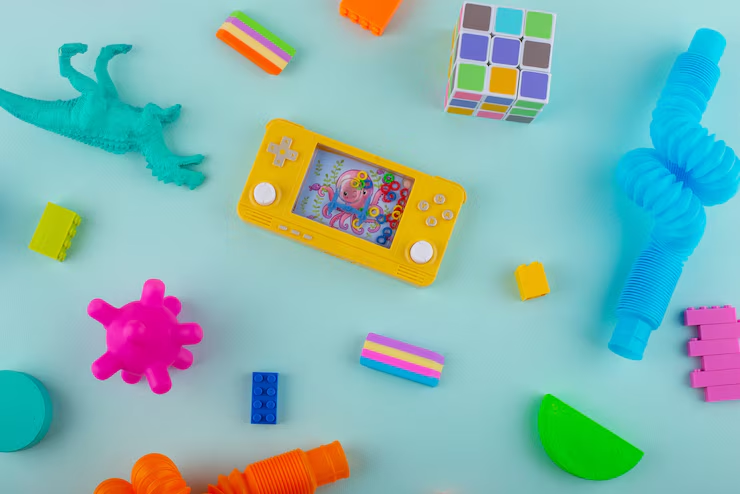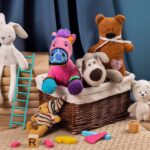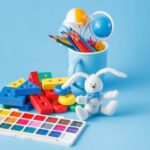Troubled With Toys For Toddlers At Different Stages?
Playing is an integral part of a child’s life and a natural way for them to explore the world, develop skills, and express their creativity. Designed to promote cognitive, motor, language, and socio-emotional development, educational toys are a vital tool in this process. From the first few months of infancy to the vibrant preschool years, these toys help children achieve developmental milestones while keeping play fun and interesting.
We need to deeply understand the importance of educational toys, with a focus on the importance of toys in early childhood development, such as the current hot discussions about educational toys: the best sensory toys for 2-year-olds, toys for preschoolers, and when babies start to get in touch with toys. Perhaps you are also full of questions about some broad issues, such as whether educational toys are suitable for children of different ages, their educational value, and whether they will waste children’s talents. Here we provide parents and caregivers with comprehensive answers and selection guides.
Understanding Developmental Toys
Developmental toys are playthings crafted to stimulate a child’s growth across multiple domains, including cognitive, motor, language, and social-emotional skills. Unlike generic toys, they are designed to align with a child’s developmental stage, encouraging the acquisition of new skills through interactive play.
For example, infants benefit from sensory toys like rattles that stimulate sight and sound, while toddlers thrive with toys like shape sorters that enhance motor skills and problem-solving. Preschoolers engage with toys that foster imagination, such as pretend play sets, and older children, including 12-year-old boys, can explore complex toys like science kits that challenge their intellect.
The National Association for the Education of Young Children (NAEYC) emphasizes that effective developmental toys should be safe, age-appropriate, and encourage exploration (Good Toys for Young Children). Interestingly, many household items, such as cardboard boxes or plastic lids, can serve as developmental tools, demonstrating that play does not always require specialized products. The key is to match the toy to the child’s emerging abilities, ensuring it is both challenging and achievable.
Best Sensory Toys for 2-Year-Olds
At two years old, children are in a critical phase of sensory development, where they learn to process and integrate information from their senses—touch, sight, sound, and sometimes taste and smell. Sensory toys for toddlers are designed to engage these senses, supporting fine motor skills, cognitive growth, and sensory regulation. These toys are particularly beneficial for sensory-seeking children, including those with autism or sensory processing disorders, as they help build neural pathways and promote a well-modulated sensory system.
Recommended sensory toys for 2-year-olds include:
- Textured Balls: Balls with bumps or soft spikes, such as those highlighted by Good Housekeeping , provide tactile stimulation and encourage grasping and throwing, enhancing motor skills.
- Musical Toys: Instruments like xylophones or drums introduce auditory stimulation, helping children develop rhythm and coordination. Wooden musical toys, as suggested by Develop Learn Grow , are durable and engaging.
- Interactive Books: Books with flaps, textures, or sounds engage multiple senses and promote language development. Montessori soft books, recommended by Montessori Generation , also support fine motor skills.
- Sensory Play Sets: Stacking cups or shape sorters offer tactile feedback and encourage problem-solving, as noted by The Bump.
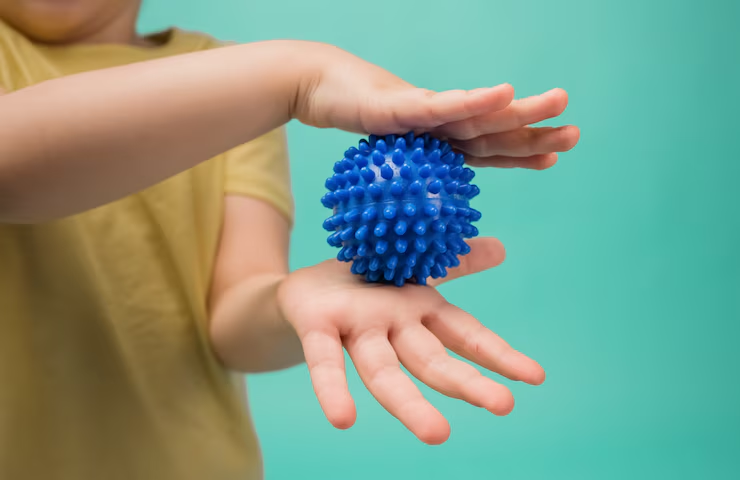
These toys not only make playtime enjoyable but also support sensory processing, which is crucial for cognitive and emotional development. Parents should ensure toys are non-toxic, safe, and made from durable materials, as 2-year-olds are active and may test toys through rough play.
Toys for Preschoolers
Preschoolers, typically aged 3 to 5, exhibit longer attention spans, increased verbal skills, and a growing interest in social interaction. They enjoy experimenting with their physical abilities, asking questions, and engaging in imaginative play with peers. Toys for this age group should reflect these developmental characteristics, fostering creativity, problem-solving, and social-emotional skills.
Recommended toys for preschoolers include:
- Puzzles: Puzzles with 12 to 20 pieces, as suggested by NAEYC , challenge spatial awareness and problem-solving skills.
- Building Blocks: Blocks that snap together, such as those from Melissa & Doug, encourage creativity and teach cause and effect.
- Pretend Play Sets: Play kitchens, doctor kits, or dress-up clothes allow children to mimic real-life scenarios, boosting social and emotional development. Little Tikes offers engaging pretend play options.
- Interactive Games: Simple board games or card games teach turn-taking and cooperation, as noted by HABA USA.
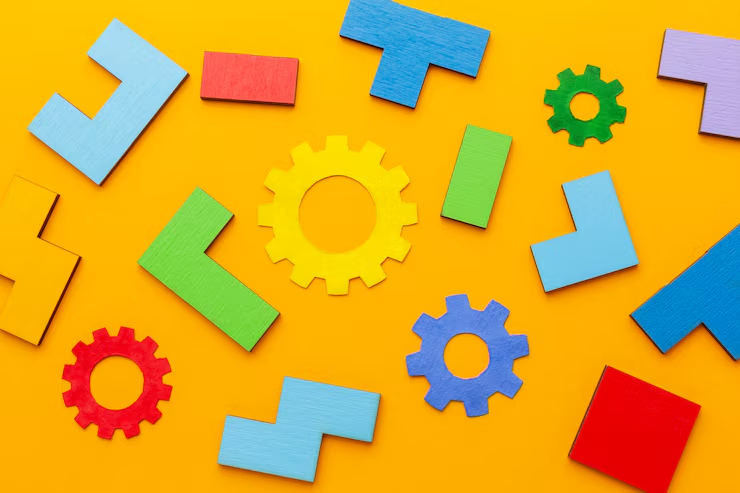
Busy Toddler emphasizes that the best toys for preschoolers spark imagination and inspire play, serving as tools for learning essential life skills like sharing and negotiating (Best Toys for Preschoolers). These toys also prepare children for school by enhancing cognitive and social abilities, making them valuable for both home and classroom settings.
When Do Babies Start Playing with Toys?
Babies begin interacting with their environment from birth, but their engagement with toys evolves as their developmental abilities grow. In the earliest months, infants are primarily focused on their caregivers, but they quickly become curious about their surroundings. Simple toys can capture their attention from birth, supporting sensory exploration and motor development.
- Birth to 3 Months: Babies gaze at faces and bright colors, as noted by NAEYC . Toys like black-and-white cards or soft rattles engage their developing vision and hearing.
- 4 to 6 Months: As hand-eye coordination improves, babies begin reaching for and grasping toys. Sensory toys like teething rings or textured balls become more engaging, as highlighted by Play Like Mum.
- 7 to 12 Months: Babies manipulate toys more intentionally, such as stacking blocks or playing with shape sorters. What to Expect notes that babies graduate from rattles to stacking toys during this period .
Ovia Health advises that while it’s never too early to introduce toys, some may not resonate until after the first month (Introducing Toys to Baby). By the end of the first year, babies actively explore their world through play, using toys to learn about cause and effect and develop motor skills. Parents should prioritize safety, ensuring toys are free of small parts or strings.
Looking For Non-toxic & High-quality Interactive Educational Toys?
Learn about the selection of educational toys for infants and preschoolers aged 0-2 years and the guidelines and arguments for the best time to use educational toys to cultivate them at each age. You may be struggling to find high-quality, safe, and respectful toys for their growth.
Here we recommend a merchant in dealstosupply that can find discounts and meet most toy needs: Joylike, they are well-designed wooden pretend toys, Montessori toys, toy kitchen toys, and dollhouse series toys that can actively lead you to participate in your children’s playtime while cultivating emotions. Using non-toxic materials and strict safety design, let children grow up in a happy time outside the screen.
Educational Needs and Toy Choices Across Ages
Educational Needs for Different Age Groups
Each age group has unique educational needs that can be supported by appropriate developmental toys:
- Infants (0-1 year): Require toys that stimulate senses and encourage exploration, such as rattles, soft books, and mobiles, which support sensory and motor development.
- Toddlers (1-3 years): Need toys that develop motor skills, language, and early problem-solving, like stacking toys, push-pull toys, and shape sorters, which enhance coordination and vocabulary.
- Preschoolers (3-5 years): Benefit from toys that enhance cognitive skills, social interaction, and creativity, such as puzzles, building blocks, and pretend play sets, which prepare them for school.
- 12-Year-Old Boys: Require toys that align with their interests and challenge their skills, such as science kits, strategy games, or sports equipment, which foster intellectual and physical growth.
Comparison of Educational Toys Across Ages
The following table compares educational toy choices for different age groups:
| Age Group | Key Developmental Needs | Recommended Educational Toys | Benefits |
|---|---|---|---|
| Infants (0-1 year) | Sensory stimulation, motor exploration | Rattles, soft books, mobiles | Enhances sensory processing, motor skills |
| Toddlers (1-3 years) | Motor skills, language, problem-solving | Stacking toys, shape sorters, push-pull toys | Improves coordination, vocabulary |
| Preschoolers (3-5 years) | Cognitive, social, creative skills | Puzzles, building blocks, pretend play sets | Boosts imagination, social interaction |
| 12-Year-Old Boys | Intellectual challenge, interest alignment | Science kits, strategy games, sports equipment | Fosters curiosity, physical skills |
Are Educational Toys a Waste of Talent?
Educational toys are far from a waste of talent; they are instrumental in nurturing a child’s potential. These toys provide opportunities to explore interests, develop skills, and engage in creative and critical thinking. For example, a toddler’s stacking toy lays the foundation for spatial reasoning, while a preschooler’s puzzle enhances problem-solving. For 12-year-old boys, toys like science kits can spark a passion for STEM fields. By tailoring toys to a child’s abilities and interests, parents can ensure they are both fun and developmentally beneficial.
Starting Time for Educational Toys
- Infants: Educational toys can be introduced from birth, starting with simple sensory items like rattles or mobiles, which stimulate early development.
- 12-Year-Olds: Educational toys remain relevant if they align with the child’s interests, such as hobbies or academic pursuits. Sensory toys for 12-year-old boys, like fidget tools or complex building kits, can support focus and creativity.
Educational Toys Are Important, Positive, And Stimulating
Educational toys are essential to supporting children’s growth from infancy to preschool and beyond. By choosing toys that match their child’s developmental stage, parents can make learning fun while developing basic skills. Sensory toys for 2-year-olds, imaginative play for preschoolers, and early sensory exploration for infants all play a unique role in children’s development. At the same time, sensory toys for toddlers help them access the world through a medium and have a shallow understanding. Perhaps the choice of educational toys for younger children is different from that for 12-year-olds.
For 12-year-old boys or girls, they have actually established a foundation for the outside world in previous learning, so their choices are also more mature and complex than those of infants and toddlers. This is a better time for their thinking development and third-party assistance. Therefore, educational toys are not a waste of children’s talents, but a way to cultivate and expand the potential of children of all ages. As children grow, the types of toys may change, but the importance of games as a foundation for learning remains unchanged. Encourage parents to actively participate in playtime, because this interaction can enhance the benefits of toys for children’s development and enhance parent-child relationships.
